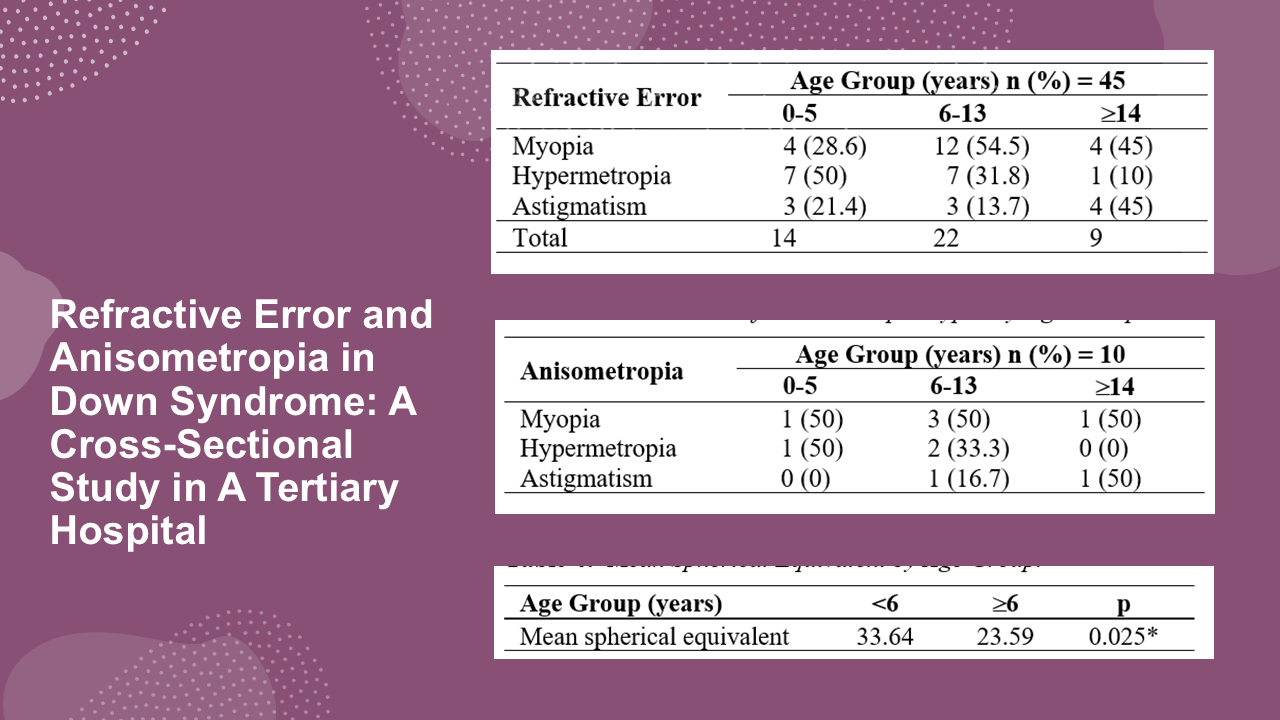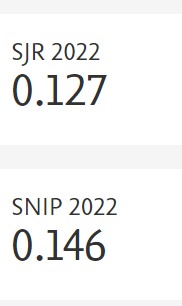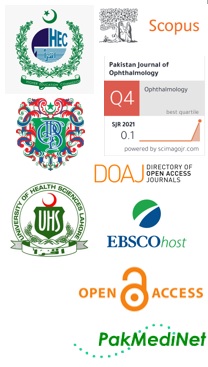Refractive Error and Anisometropia in Down Syndrome: A Cross-Sectional Study in A Tertiary Hospital
Doi: 10.36351/pjo.v41i2.2031
DOI:
https://doi.org/10.36351/pjo.v41i2.2031Abstract
Purpose: To determine the frequency of refractive errors and the magnitude of anisometropia in children with Down syndrome (DS) across different age groups.
Study Design: Cross-sectional study.
Place and Duration of Study: Ophthalmology Clinic at Ngoerah General Hospital from January 2024 to September 2024.
Methods: A total of 53 DS children were included in the study. Refractive errors were recorded from the latest control visit, with measurements taken from fully dilated pupils. The highest recorded hypermetropic value, as well as the lowest myopic and cylindrical values from both eyes, were used for analysis. Continuous variables were reported as mean ± standard deviation (SD), and categorical variables were reported as frequencies and percentages. Refractive errors were compared between preschool (<6 years) and school-age (≥6 years) groups using the Mann-Whitney test, with p-values <0.05 considered statistically significant.
Results: Out of 53 DS children, 85% had refractive errors. The most common refractive error was myopia (37.7%), followed by hypermetropia (28.3%) and astigmatism (18.9%). Among the 35 children in the school-age group (≥6 years), 45.7% had myopia and 22.8% had hypermetropia, whereas among the 18 children under 5 years of age, 38.9% had hypermetropia. A significant difference in the spherical equivalent between the two age groups was observed (p < 0.05). Anisometropia was present in 19% of participants, with 15% exhibiting a low degree of anisometropia.
Conclusion: The high prevalence of refractive errors in DS children and the tendency toward myopia in primary school-aged children support an age-dependent myopic shift.

Downloads
Published
How to Cite
Issue
Section
License
Copyright (c) 2025 Ni Made Ayu Surasmiati, krisnhaliani wetarini, Saphira Evani

This work is licensed under a Creative Commons Attribution-NonCommercial 4.0 International License.






